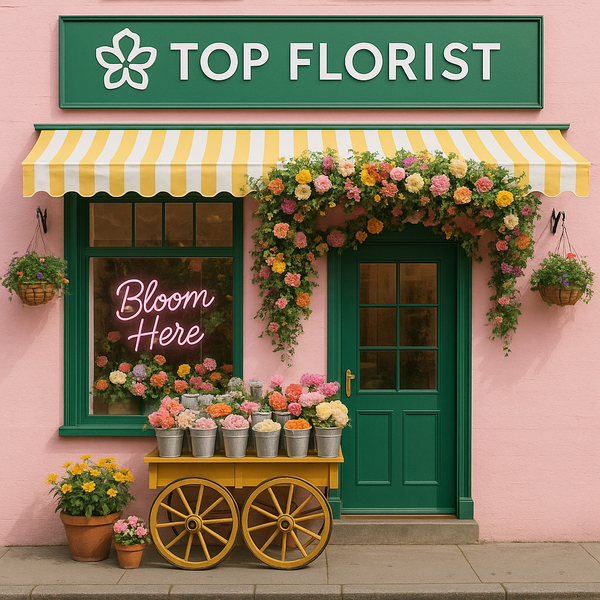
The Color Wheel of Flowers | Floral Design & Color Harmony
Share
The Color Wheel of Flowers: How Petals Paint Emotion and Design
Flowers have always been nature’s most vivid storytellers, and their power comes not only from fragrance or form but also from color. Just like artists use the color wheel to create harmony, contrast, and mood, florists rely on the same principles to design arrangements that are visually stunning and emotionally meaningful. Whether you are choosing flowers for a wedding, a sympathy tribute, or a seasonal bouquet, understanding the color wheel in floral design can completely transform the impact of your gift.
Primary Colors in Flowers
The primary colors—red, blue, and yellow—form the foundation of every color palette. In flowers, these shades are powerful on their own:
- Red roses: Passion, romance, deep love
- Blue delphiniums: Tranquility, depth, and trust
- Yellow sunflowers: Cheerfulness, warmth, and friendship — shop sunflowers
Arrangements built around primary colors create bold and unforgettable bouquets. For a bright, cohesive look, pair yellow roses with sunflowers for a sunny, monochromatic palette; add blue accents like hydrangea to bring balance and depth.
Complementary Flower Colors
The magic happens when opposite colors on the wheel are combined. Purple and yellow, red and green, blue and orange—these pairings naturally enhance each other’s intensity. A bouquet with yellow lilies and purple orchids makes both shades appear more vivid, perfect for birthdays or celebratory events where joy and energy are the focus.
Analogous Harmony
Analogous colors sit side by side on the wheel and create seamless harmony. Think of a bouquet blending orange roses, coral tulips, and peach carnations. This warm palette feels soft, romantic, and cohesive—ideal for weddings, anniversaries, or intimate dinner parties.
Triadic & Split-Complementary in Floral Design
For a more artistic touch, florists use triadic color schemes (three colors evenly spaced on the wheel). Imagine combining red gerbera daisies, yellow lilies, and blue iris for a bold, balanced bouquet. Alternatively, split-complementary palettes allow one bold color to shine with two softer accent tones, making it versatile for sympathy flowers or sophisticated centerpieces.
Seasonal Color Palettes
Each season has its own floral palette based on the color wheel:
- Spring: Pastel pinks, lilacs, and mint greens
- Summer: Bright yellows, oranges, and vibrant reds
- Fall: Burnt orange, golden peach, deep burgundy — explore our Fall Favorites
- Winter: Crisp whites, icy blues, deep evergreen
Tying flower colors to seasonal themes adds natural harmony and helps bouquets feel grounded in their time of year. Discover rich autumn tones in our Fall Favorites, search Yellow Roses for cheerful highlights, or brighten any space with radiant Sunflowers.
The Psychology of Color in Flowers
Color isn’t just visual—it’s emotional. Red ignites passion, blue calms the mind, yellow uplifts, and white symbolizes purity. Understanding these meanings allows you to send not just flowers, but emotional messages. A proposal bouquet of red roses and white lilies speaks of both love and purity, while a sympathy arrangement of blue hydrangea and white orchids conveys peace and remembrance.
Conclusion: Designing With the Wheel in Mind
Next time you order flowers, think like a designer. Use the color wheel to decide whether you want harmony, contrast, or bold expression. Color makes all the difference in how your gift is received. Flowers aren’t just blooms—they’re brushstrokes on life’s canvas.
Bring the Color Wheel to Life
Create your own masterpiece: browse Fall Favorites, brighten with Yellow Roses, or go bold with Sunflowers.
Shop Fall Favorites